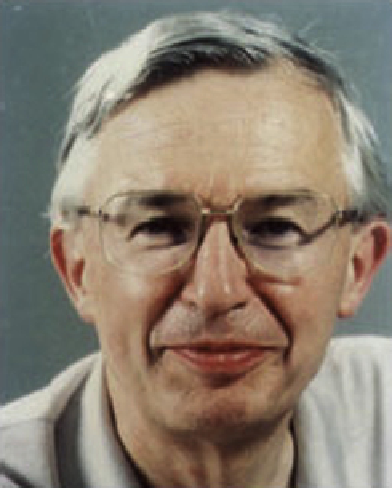Biology Reference
In-Depth Information
FIGURE 14.20
Charles Pedersen (1904
e
1989). Reprinted with permission.
[63]
(
Figure 14.20
) while working at DuPont in 1967. For this work Pedersen was co-awarded the
1987 Nobel Prize in Chemistry. Crown ethers are cyclic compounds composed of several ether
groups. Themost common crown ethers are oligomers of ethylene oxidewith repeating units of
(
6 (hexamer). Crown ethers are
given names X-crown-Y, where X is the total number of atoms in the ring andY is the number of
these atoms that are oxygen. The term crown refers to the crown-like shape that the molecule
takes. Crown ether oxygens form complexes with specific cations that depend on the number
of atoms in the ring. For example, 18-crown-6 has high affinity for K
þ
, 15-crown-5 for Na
þ
, and
12-crown-4 for Li
þ
. The crown ether depicted in
Figure 14.19d
is 18-crown-6. Like valinomycin,
the exterior of the ring is hydrophobic, allowing crown ethers to dissolve in themembrane lipid
bilayer while carrying the sequestered cation. It is now possible to tailor-make crown ethers of
different sizes that can encase a variety of phase transfer catalysts. These crown ethers are used
to catalyze reactions inside the membrane hydrophobic interior.
e
CH
2
CH
2
O-)
n
where n
¼
4 (tetramer), n
¼
5 (pentamer) or n
¼
Nystatin
Nystatin is a channel forming ionophore that creates a hydrophobic pore across
a membrane
[37,38]
. Channel-forming ionophores allow for the rapid facilitated diffusion
of various ions that depend on the dimensions of the pore. Nystatin, like other channel-form-
ing ionophores amphotericin B and natamycin, is a commonly used anti-fungal agent.
Finding medications that can selectively attack fungi in the presence of normal animal cells
presents a difficult challenge since both cell
types are eukaryotes. Bacteria, being


